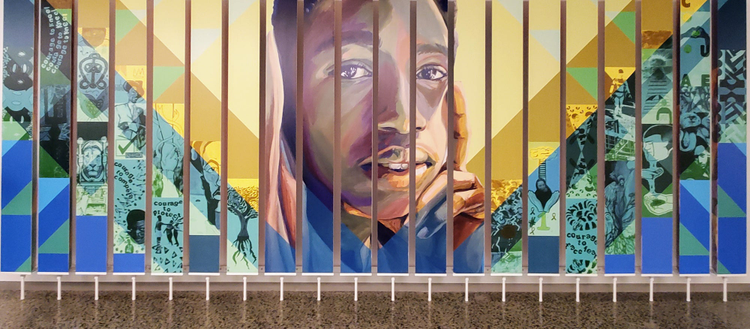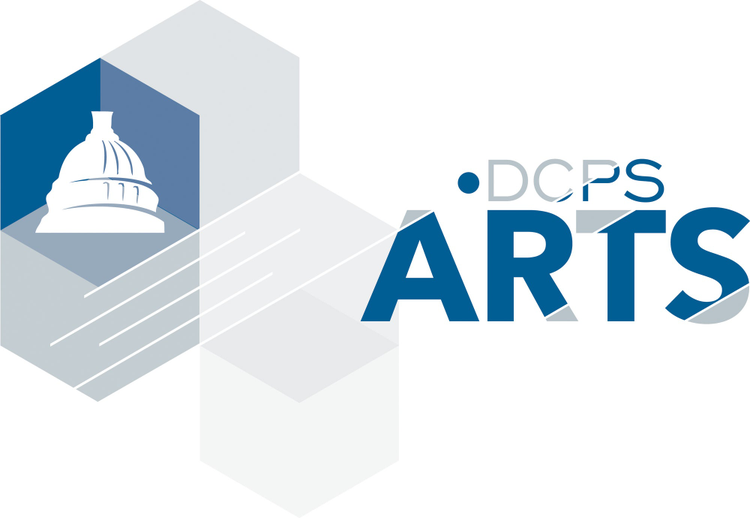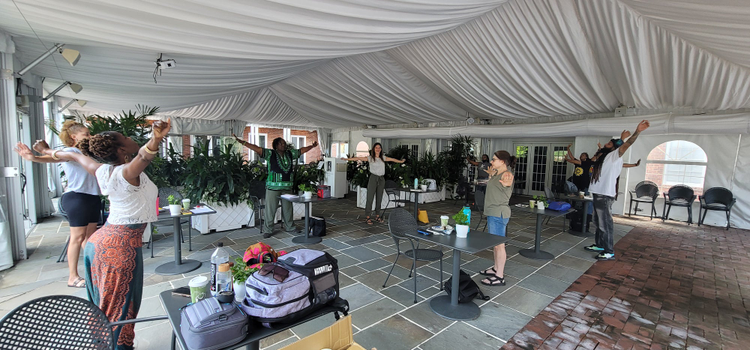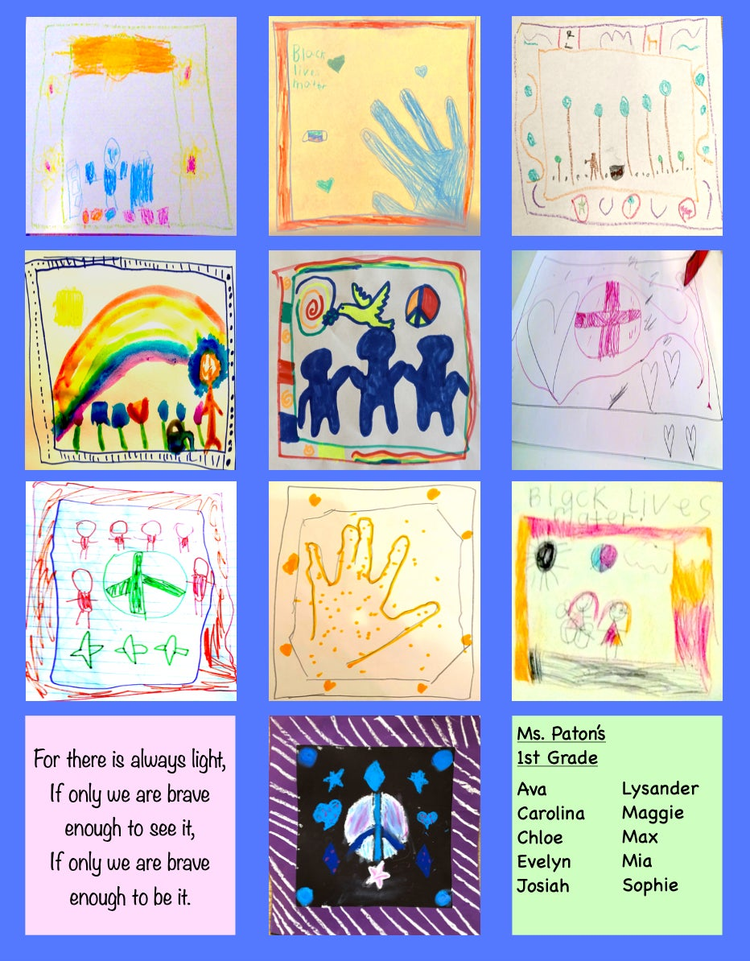How DCPS supports students’ social and emotional health through art

Image source: Lindsey Vance 2019. Philadelphia artist, Michelle Angela Ortiz, worked with DCPS students to create the mural.
Serving around 50,000 students in the nation’s capital, District of Columbia Public Schools (DCPS) is a PK- 12 school district that can deliver unique learning experiences thanks to its position next to some of the nation’s most important buildings, museums, and institutions. DCPS strives to help all students feel supported, challenged, and prepared to positively influence society and thrive in life.
About 74 percent of the student population comes from economically disadvantaged backgrounds. DCPS believes strongly that art has the power to help address inequalities by building the social emotional and academic development of its students. Lindsey Vance, ATR-BC, LPC an art therapist working as Manager for Visual Arts for DCPS, explains the power of art for students.
“The field of education is starting to realize the importance of students’ social and emotional health on learning,” says Vance. “The ability to self-regulate, to understand feelings and emotions — that all plays a huge role in getting students to show up and learn.” DCPS Arts has embedded Social Emotional Academic Development (SEAD) directly into the curriculum, with built in support to assist teachers with being intentional about implementing the Casel five competencies for every student.
Whether students are learning visual arts, music, theater, or dance, DCPS focuses on how art can be used to discuss themes and support discovery. While art curriculum typically focuses on physical mediums, digital is becoming an increasingly important way of creating and sharing art. Using the free Adobe Creative Cloud Express app and other Adobe Creative Cloud apps, DCPS brings digital art into the classroom and provides students with new ways to express and share themselves.

Building a framework to empower students through art
Art education at DCPS is centered around a framework that helps students learn to use their voice and develop critical problem-solving and communication skills. The framework focuses on six themes:
1. Identity
2. Interaction
3. Language
4. Determination
5. Creation
6. Transformation
Art curriculum revisits and builds upon these themes for each age group. For instance, for pre-K students, “identity” often means family. Students create art that celebrates their own unique families. Middle school students, by contrast, look at identity from the perspective of what kind of person they want to become.
“We’re still teaching artistic techniques, but the focus on our art curriculum is on connecting students with the theme,” explains Mary Lambert, director of Arts Programming at DCPS. “Instead of just teaching students to paint with watercolors, we teach students to make a portrait of their community using watercolors.”
Working within this framework allows DCPS to create evolving curriculum that still provides teachers the autonomy they need to match where their students are and support student learning. DCPS further supports social and emotional learning through art with its ACE fellowship for Cultivating Compassionate Classrooms. This year-long fellowship program trains 10 DCPS teachers a year on themes such as trauma theory and adverse childhood experiences. Teachers learn how to help students of all backgrounds feel supported, explore their feelings, and be empowered through the arts.
“Especially in the past few years, students have really had their worlds turned upside-down,” says Vance. “We think it’s important to give our teachers the tools and resources that they need to model healthy mindsets and provide support that students need to excel.”

DCPS teachers from a recent ACE Fellowship: Cultivating Compassionate Classrooms retreat.
Student art in the community
Digital opens the doors for more ways to share art with the community through virtual experiences. DCPS puts on an annual art showcase to highlight some of the work done by its students. In 2021, DCPS created an innovative virtual festival known as Rep My City, in which students were asked to reimagine the future of arts education in DC. In collaboration with partners including Hirshhorn’s Art Lab and Genesis Steam, students curated artwork into virtual reality showcases. Students, families, and the public were then invited into virtual rooms to view the digital showcase online. Visitors could choose an avatar, “walk” around the virtual gallery, and discuss their experiences with fellow visitors.
Video is another important way of sharing art digitally. In celebration of Black History Month, the Wilson Jazz Strings group at Wilson High School performed an arrangement of This Little Light of Mine. Each performer recorded their own part at home. Their music teacher, Paul Phifer, edited the performances together using Adobe Premiere Pro and Adobe Premiere Rush. The video is intercut with photographs of notable black politicians, scientists, entertainers, athletes, and thinkers from throughout American history, further emphasizing the Black History Month message.
After President Joe Biden’s inauguration, teachers at Lafayette Elementary School asked students to design a quilt square inspired by Amanda Gorman’s inaugural poem, “The Hill We Climb”. The project, Brave Enough Quilts, used Adobe Creative Cloud Express to collect all of the students’ artwork into digital quilts. Working with Creative Cloud Express made it easy to insert not just pictures of all the quilts, but also videos showing Gorman’s powerful reading of the poem and a video highlighting all of the digital quilts.

Creating lessons with Creative Cloud Express
While Adobe applications help create shareable virtual projects, teachers across DCPS also use Creative Cloud Express to create presentations and videos for their lessons. When the pandemic sent students home, teachers quickly collaborated to create a series of virtual lessons to help students feel engaged and connected. DCPS art teachers created a video using Creative Cloud Express discussing fashion, transformation, and self-expression. The Make You Mark Mask lesson then invited students to conduct research on artists and make their own mask, combining art and expression with timely, practical advice. DCPS uploaded the video to its Canvas learning management system, but also shared it on YouTube and even on a local television station to maximize reach to all students.
Some teachers have also used Creative Cloud Express for student assignments. Jennifer Sonkin at Brookland Middle School used Creative Cloud Express to create a lesson on Aaron Douglas, the father of African American art. One of the hallmarks of Douglas’ style is the use of concentric circles that create halos, highlighting specific elements of the art. As part of her assignment, Sonkin asked students to use Creative Cloud Express to create their own circular artwork. Sonkin’s Creative Cloud Express page walks students through each step of the assignment and helps them get started with using Creative Cloud Express to create their own design.
“All students don’t need to learn to be the next great artist, but I want everyone who comes through our art classes to feel like they can be creative, that they can offer a new perspective,” says Vance. “Our next great engineers can be nurtured in the art classroom by gaining the confidence in their ability to learn, explore, and share ideas visually.”
Promoting creativity and digital literacy for all students
For many years, DCPS graphic design students have worked with Adobe Creative Cloud apps to build their creative and digital literacy skills. Now DCPS is expanding access to even more high school classrooms, taking advantage of the discounted Adobe Creative Cloud pricing available for K-12 schools. Creative Cloud Express, which is free for K-12 students and schools, brings digital art and communications to students at all grade levels, so all students can start to build their digital literacy skills.
“One of our values is making sure that students are prepared to succeed. When students are digitally literate, we give them the confidence to pick up apps and try something new, which will help them in college or their careers,” says Vance. “That’s what I love about Adobe Creative Cloud apps like Creative Cloud Express. It’s incredibly easy to use, so no matter what their background or skill level, all students can find ways to share their voice with Creative Cloud Express.”